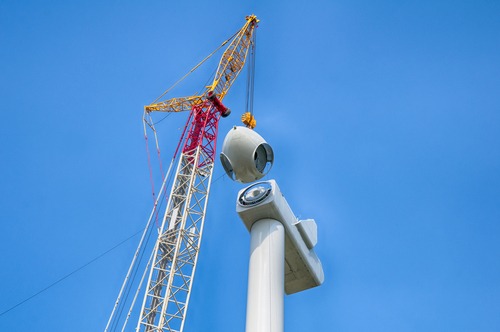Onshore wind generation construction costs drop as capacity rises

According to the U.S. Energy Information Administration (EIA), onshore wind generators face much more favorable construction costs today than they did in 2013, with prices having fallen by more than $500 per kW between then and 2019.
In part, this resulted in major increases in capacity, with 104 GW in wind capacity deployed by the end of 2019. That means that in six years, U.S. onshore wind generating capacity increased 74 percent, as average construction costs tumbled from $1,895 per kW to $1,391 per kW — a 27 percent decrease in costs since 2013.
Overreliance on the average could be deceptive, though, as costs and capacity alike have varied heavily from region to region. This couldn’t be clearer than the divide between Texas and California. In Texas, onshore wind construction costs for the Electric Reliability Council of Texas (ERCOT) averaged about $1,114 per kW in 2019. The region installed and hosts the largest total wind capacity of any region in the United States. Meanwhile, California also hosts significant capacity — 5.9 GW, compared to Texas’s 26 GW — but averaged $2,310 per kW for new wind installations between 2013 and 2019.
The split can be owed to numerous factors. In Texas, wind is being helped by favorable market conditions, wholesale prices, and certain geographic advantages. Comparatively, California’s high costs stem from state policies and regulations, land-use restrictions, and difficulties creating wind projects in general.
Still, both states are located in the Wind Belt, an area with some of the best wind resources and capacity in the United States. It hosts ERCOT, as well as the market regions known as Southwest Power Pool (SPP) and the Midcontinent Independent System Operation (MISO). In SPP, average construction costs across its 14 states settled at around $1,426 per kW, while in MISO, average costs reached $1,637 per kW.
